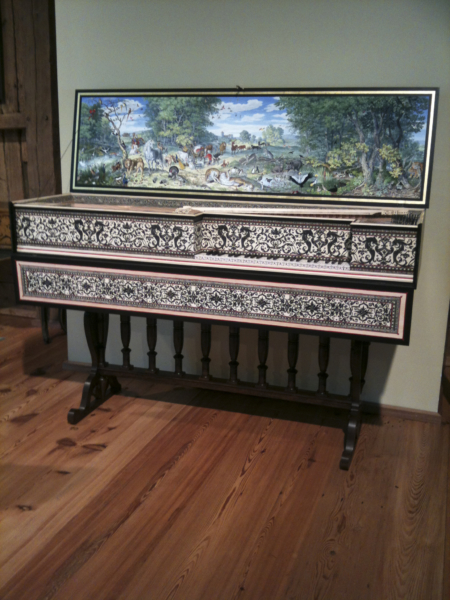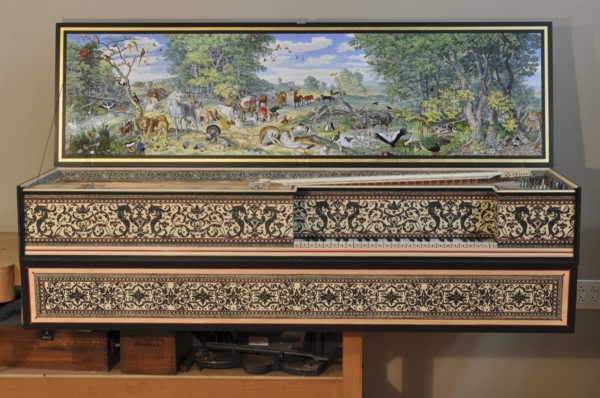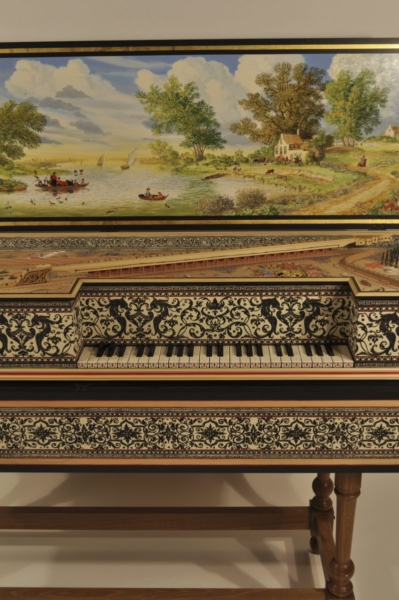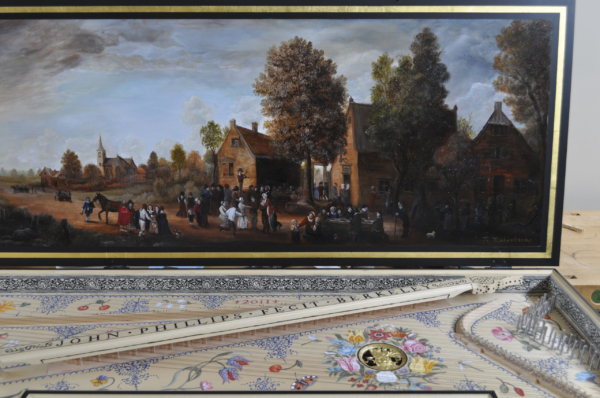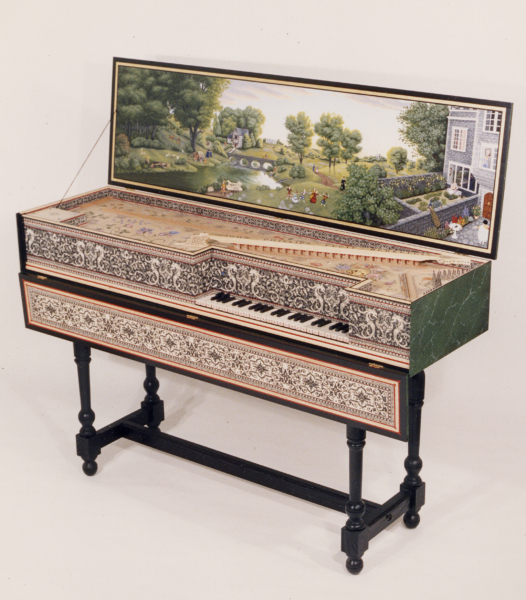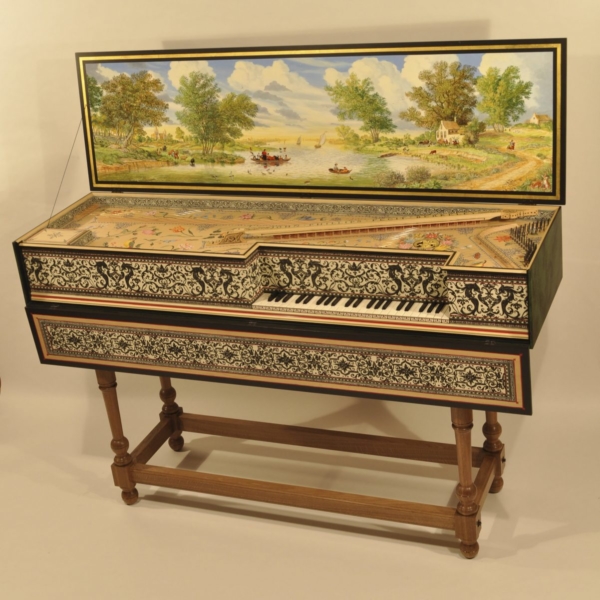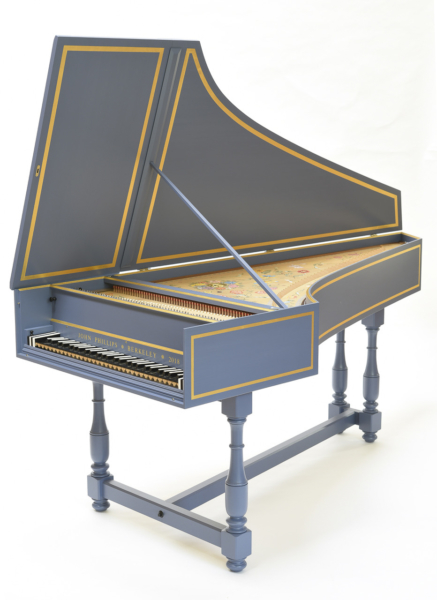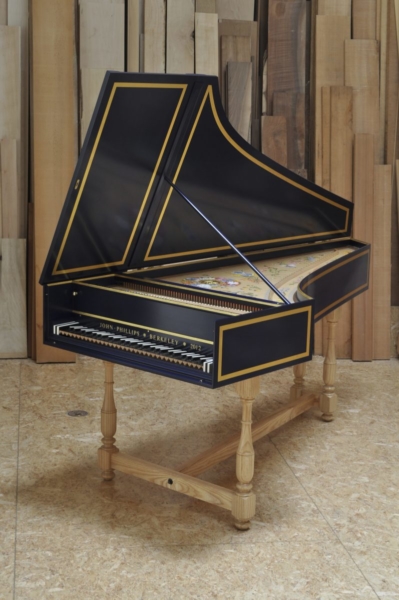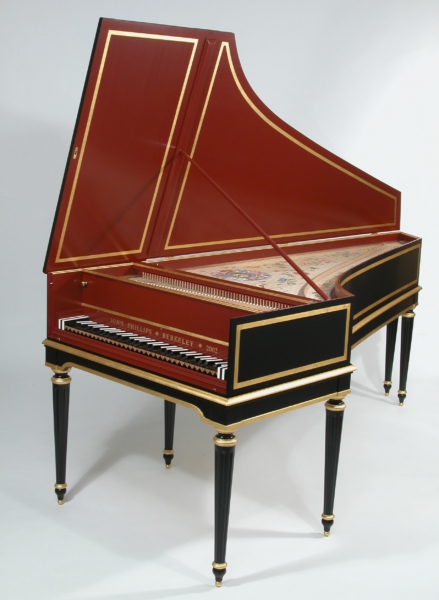From the rich tradition of Flemish harpsichord making, we have chosen two models: a muselar from the great Ruckers family tradition from the 17th century and a single manual harpsichord from one of their 18th century followers, Albert Delin.
Muselar after Couchet, 1650
The muselar with its distinctive fluty treble and the snarling arpicordum is a unique window into the musical sound-world of another time. Our version is decorated with the faux marbre exterior and block printed paper interior familiar in paintings by Vermeer and others. The lid is further adorned with Latin mottos. The soundboard is painted in the traditional style. The keyboard has bone naturals, with embossed paper-over parchment arcades, and black oak accidentals. A high trestle stand with four turned legs is standard. A fancy balustrade stand is optional. These instruments are normally played standing or sitting on a high stool.
The keyboard range has been extended with the addition of the low F# and G# as split keys to the short octave; essential for playing much Elizabethan music.
Single manual harpsichord after Delin
The prototype for this model was built by Albert Delin of Tournai in 1768. It is now in the collection of the harpsichordist Kenneth Gilbert, who kindly made the instrument available to me for study. It’s wide keyboard range and clear resonant tone make it suitable for virtually all the harpsichord literature.
The case is painted one or two colors with gold bands and moldings. The soundboard is painted in an appropriate style. The keyboard has ebony naturals and bone-topped accidentals. We reproduce the carved keyfronts and “skunktail” keyblocks of the original. The instrument rests on a trestle stand with four turned legs. Optional are table stands with either cabriole or turned and fluted legs.
Range: GG-e3, transposing keyboard (a1=415 and 440, a1=392 and 415 or a1=392, 415 and 440 (without “skunk-tail” keyblocks).
Disposition: 2×8′, buff
Dimensions: 7’2″ X 2’11” (223 x 90 cm)

